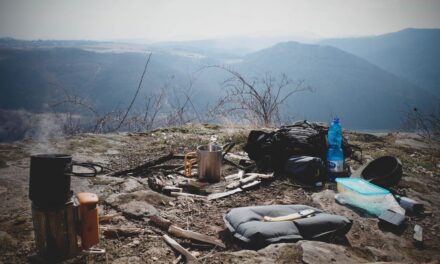Understanding the Importance of a Survival Items List
In the pursuit of preparedness, compiling a list of survival items is a fundamental step. This comprehensive guide delves into the critical task of identifying and gathering essential survival items, tailored to equip you for a range of scenarios from natural disasters to unexpected wilderness adventures. The essence of survival preparedness lies not just in the accumulation of gear but in the thoughtful selection of items that ensure safety, sustenance, and resilience in challenging situations.
Creating a survival items list is more than just a practical exercise; it represents a strategic approach to preparedness. Whether you’re an experienced survivalist, an outdoor enthusiast, or someone just beginning to explore the realm of emergency preparedness, understanding what to include in your survival kit is vital. This guide aims to provide an engaging and in-depth overview of the essential items, each serving a specific purpose in enhancing your ability to survive and thrive in various conditions.
Through expert insights, research, and practical experience, we will explore a comprehensive list of survival items. This guide will cover everything from basic necessities to advanced tools, ensuring readers are well-equipped with the knowledge to build a survival kit that is both comprehensive and adaptable. By the end of this guide, you’ll have a clearer understanding of the essential items needed for survival, enabling you to prepare effectively for any eventuality.
In-Depth Look at Essential Survival Items
Core Survival Necessities
The foundation of any survival kit revolves around addressing basic human needs: shelter, water, food, and safety. Here’s a detailed list of items to consider:
- Water Purification: Include items like water filters, purification tablets, and collapsible water containers. Access to clean drinking water is paramount in any survival situation.
- Shelter and Warmth: A compact, durable tent or emergency bivvy, along with a lightweight sleeping bag, space blanket, and a tarp for extra protection from the elements.
- Fire Starting Tools: Waterproof matches, fire starters, and a reliable lighter. The ability to start a fire is crucial for warmth, cooking, and signaling.
- Emergency Food Supplies: Non-perishable, high-energy food items such as energy bars, freeze-dried meals, and trail mix. Consider the caloric value and shelf life.
Tools and Equipment
Beyond the basics, include tools and equipment that enhance survival capabilities:
- Multi-Tool and Fixed Blade Knife: A quality multi-tool and a sturdy knife are indispensable for various tasks, from building a shelter to preparing food.
- Navigation Tools: A compass, detailed maps of the area, and possibly a GPS device. These are vital for maintaining direction and location awareness.
- First Aid Kit: A comprehensive first aid kit tailored to your group’s size and needs, including personal medications, bandages, antiseptics, and tools for treating injuries.
- Communication Devices: A whistle, two-way radios, and a mirror for signaling. In more remote areas, consider a satellite phone or a personal locator beacon.
Additional Items for Enhanced Preparedness
To further bolster your survival kit, consider adding:
- Weather-Appropriate Clothing: Durable, weather-appropriate clothing, including moisture-wicking layers, a waterproof jacket, and sturdy footwear.
- Lighting: Headlamps, flashlights, and extra batteries or solar-powered chargers.
- Sun Protection: Sunglasses, sunscreen, and a wide-brimmed hat, especially in areas with high UV exposure.
- Personal Hygiene Items: Basic hygiene supplies like toothbrush, toothpaste, biodegradable soap, and hand sanitizer.
In the next section, we’ll summarize the key takeaways and offer final thoughts on assembling your survival kit with these essential items.
Summary and Key Takeaways: Building Your Comprehensive Survival Kit
Finalizing Your List of Survival Items
Our in-depth exploration into creating a list of survival items has equipped you with the knowledge to assemble a kit that caters to all fundamental aspects of survival. To summarize the essentials:
- Water, Shelter, and Warmth: Prioritize items for clean water access, reliable shelter, and maintaining body warmth.
- Food and Fire: Stock up on non-perishable food items and ensure multiple methods for fire starting.
- Tools and Navigation: Include a versatile multi-tool, a durable knife, and reliable navigation tools.
- First Aid and Communication: A well-stocked first aid kit and effective communication devices are crucial.
- Clothing and Lighting: Weather-appropriate clothing and adequate lighting options are essential for any scenario.
Implementing Your Survival Kit
With a comprehensive survival items list in hand, the next step is implementation and regular maintenance:
- Regular Review and Update: Periodically review your kit to replace expired items, upgrade gear, and adjust contents based on changing needs or knowledge.
- Practice and Familiarity: Familiarize yourself with each item in your kit. Practice using them in controlled environments to ensure you’re ready to use them efficiently in a real emergency.
- Customization: Tailor your kit to your specific environment, skill level, and the types of emergencies you are most likely to encounter.
- Continuous Learning: Stay informed about new survival techniques and gear advancements. Knowledge is as crucial as the gear itself.
In conclusion, preparing a survival kit with a well-thought-out list of items is a critical step in ensuring safety and resilience in emergencies. By carefully selecting and maintaining your survival gear, you are not just preparing for the unknown; you are equipping yourself with the confidence and capability to face and overcome challenging situations.








